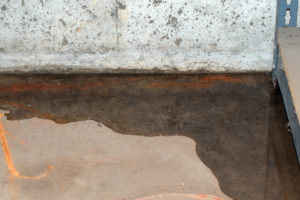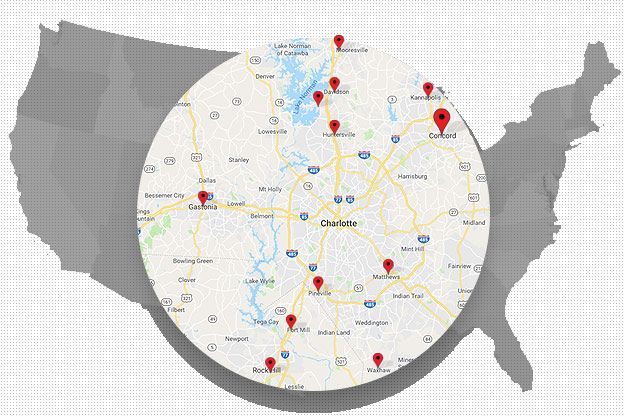What Every Homeowner Should Know About Sump Pump Installation

Water is both a blessing and a curse.
In its proper place, water keeps plants green. It hydrates people and animals. It creates serene ponds with aquatic animals.
But in the wrong place, it feeds mold in your home and creates a damp, musty smell. It can destroy your belongings when it seeps into your basement.
Thankfully, modern engineering has come up with a solution to this problem: the sump pump.
Keep reading to learn more about why you may need to install a sump pump in your basement.
What Is a Sump Pump?
In short, a sump pump keeps your basement dry.
It is a small pump that sits beneath the surface of your basement in a sump pump hole or on top of the basement floor. The sump pump hole is a hole in your basement floor with an exposed top.
Groundwater will collect in the sump pump hole. As water collects in the sump basin, the pump will redirect it out of and away from your home.
A submersible pump in the sump hole has a float switch that turns the pump on when the water reaches a particular level. So when the float lifts high enough, the pump turns on. When the float falls back down, the pump shuts off.
Do I Need a Sump Pump?
Typically, if your basement takes on water, you need a sump pump. Examine your basement to see why it has water.
Is the water seeping through the concrete? Do you have a cracked foundation? Look for why you have water first to determine if you need a pump.
Some regions of the United States have a high water table. As you look at the homes around you, ask homeowners if they have sump pumps. If they do, you most likely need one as well.
A high water table means any amount of rain will cause water to rise and come into subterranean areas, like your basement.
Who Installs Sump Pumps?
Plumbers can install sump pumps.
However, if you want the best of the best, call a basement expert. These guys understand underground water issues. They know the ins and outs of basements and how to redirect water.
Basement experts can also assess your foundation while they’re looking at how to install a sump pump. They’ll be able to tell you if you need foundation repair as well as a water redirection system.
Can a Sump Pump Fail?
Like any mechanical device, a sump pump can fail. Almost every time a sump pump fails, though, you can find a solution. Here are some of the top reasons for sump pump failure and their subsequent solutions.
Problem: Too Much Water
If you have extremely high volumes of water, your sump pump may not be able to handle the load. This leaves you with a working pump in the middle of a flooded basement.
Solution: A Bigger Pump
Pumps come in different sizes. If you need to handle a large volume of water, you will need a bigger pump.
This is where basement experts can help. When you have someone install a sump pump for you, he can tell you what size will work best.
Having a second pump can help as well. Sometimes you just have massive amounts of rain that flood whole communities. If that’s a possibility, then have two pumps ready so you can work them both at the same time.
Problem: Faulty Mechanics
Not all pumps are made alike. Pumps can easily burn out when a float switch fails. If you have a small pump that you work to death, it will burn out.
Cheap pumps with junky components also fail. They cannot handle extreme situations like inches of rain in a short amount of time.
You might want to save money by buying a cheaper pump. This will cost you more in basement repair. Purchase a quality pump with high-quality components. Do your consumer research or trust your basement expert.
Problem: Power Outage
Regular sump pumps run on electricity. When the power goes out, whether it’s a tripped circuit or a downed power line, your sump pump will not work.
Most people that have good sump pumps and drainage systems find themselves with flooded basements because of power outages. So even if you do everything right, a loss of power means disaster.
Solution: Backup Power
A generator can solve this problem pretty simply. Individuals who live in areas prone to power outages know the necessity of a generator. But if you live in a typical first-world neighborhood, you do not have a generator on standby.
Sump pump engineers have developed some pretty ingenious ways to solve this problem without a generator.
Battery-backup sump pumps plug into your electricity to receive their charge. Then, when the power goes out, the charged battery kicks in and keeps the pump going until the power comes back on.
A waterline pump also works well in the case of an outage. When the power goes out, a waterline pump will open a water valve to your city water. The city water then, with enough PSI, will power your sump pump until the power comes back on and the valve closes.
Problem: Clogged Intake
Your sump pump will have an intake where water comes in. Sometimes this intake has a screen. If debris clogs the intake, your pump will not pump efficiently, and it will become overwhelmed.
Solution: Maintain Your Pump
Put your pump on a maintenance schedule. Then check it regularly. Check the intake to make sure debris hasn’t begun to build up.
Clogged Discharge Line
Even if your pump itself is working efficiently, if the line from the pump to the discharge site has a clog, the pump will not work. A clogged or frozen discharge line will prevent water from leaving the basement. The water will then cycle back into the hole.
Solution: Check Your Line
Whenever you check your pump’s intake, also check your line. If the weather looks like it will get sketchy and freeze your line, come up with a backup solution for the line. Look into having your pump go into your sewer system until the line thaws.
Stay Smart, Stay Dry
If you live in a soggy area, you do not have to have a soggy basement. A quality sump pump can solve your problem.
For all of your water removal needs, contact us.
Recent Posts
- How Crawl Space Encapsulation Benefits the Environment – An Expert Guide
- 6 Ways Professionals Keep Your Crawl Space in Top Shape
- Structural Repair Solutions for Crawl Spaces, Basements, and Foundations
- Essential Crawl Space Repair Tips Every Homeowner Should Know
- The Importance of Radon Mitigation: Ensuring a Safe Living Environment for Homeowners
Categories
- Basement Mold
- Basement Waterproof Foundation
- Basement Waterproofing
- Crawl Space Dehumidifier
- Crawl Space Encapsulation Cost
- Crawl Space Repair
- Crawl Space Waterproofing
- Encapsulation
- Foundation Repair
- Foundation Waterproofing
- French Drains
- Leaky Basement
- Mold Remediation
- Mold Removal
- Radon
- Slab Jacking
- Sump Pump
- Uncategorized
- Vapor Barrier
- Water Leak
- Waterproofing
- White Mold
Archives
- June 2024
- May 2024
- March 2024
- January 2024
- June 2023
- May 2023
- April 2023
- March 2023
- February 2023
- January 2023
- December 2022
- November 2022
- October 2022
- September 2022
- August 2022
- July 2022
- June 2022
- May 2022
- March 2022
- February 2022
- January 2022
- December 2021
- November 2021
- October 2021
- September 2021
- August 2021
- July 2021
- June 2021
- May 2021
- April 2021
- March 2021
- February 2021
- January 2021
- December 2020
- November 2020
- October 2020
- September 2020
- August 2020
- July 2020
- June 2020
- May 2020
- April 2020
- March 2020
- February 2020
- January 2020
- December 2019
- November 2019
- October 2019
- September 2019
- August 2019
- July 2019
- June 2019
- May 2019

